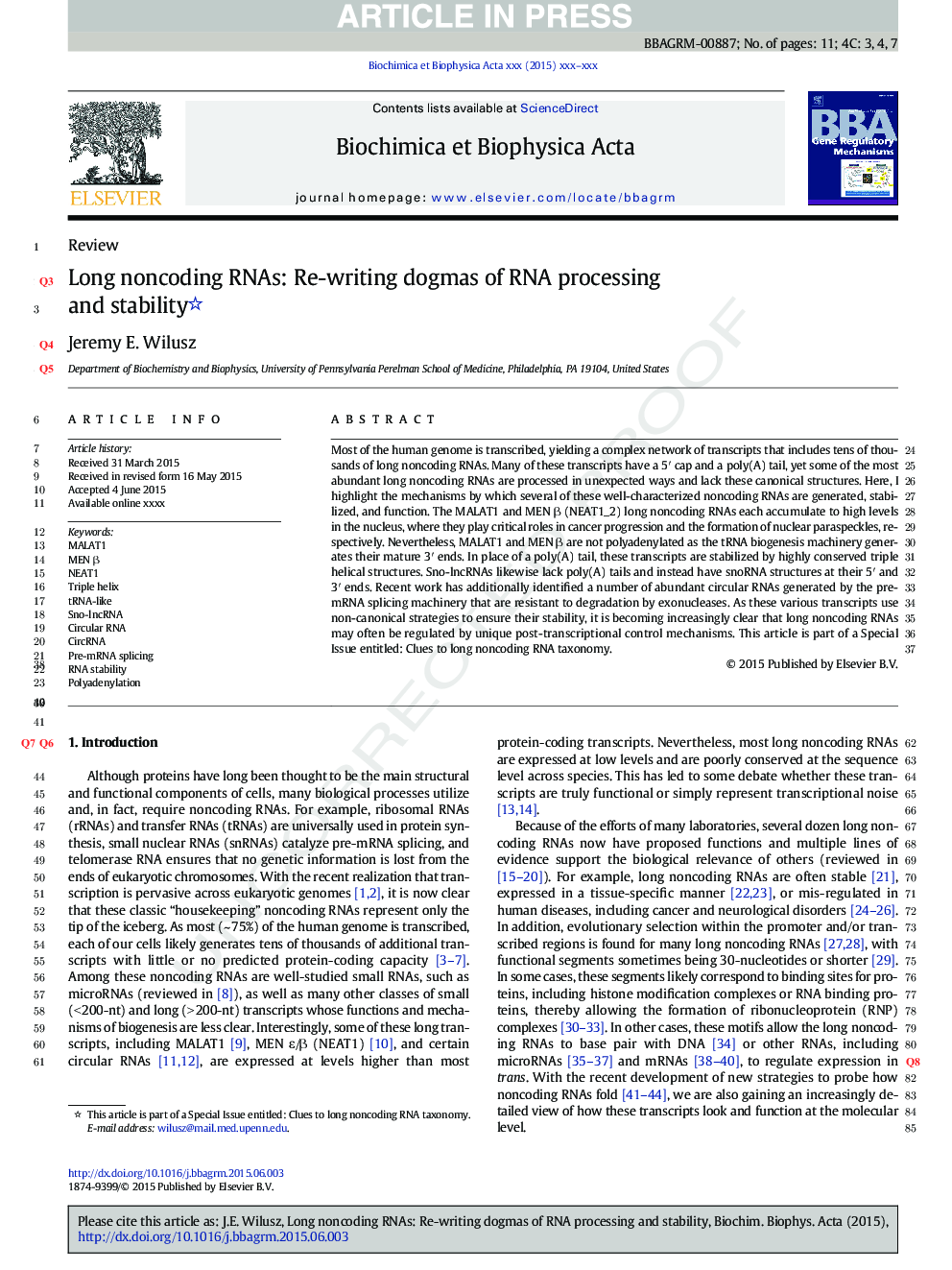| Article ID | Journal | Published Year | Pages | File Type |
|---|---|---|---|---|
| 10798946 | Biochimica et Biophysica Acta (BBA) - Gene Regulatory Mechanisms | 2016 | 11 Pages |
Abstract
Most of the human genome is transcribed, yielding a complex network of transcripts that includes tens of thousands of long noncoding RNAs. Many of these transcripts have a 5Ⲡcap and a poly(A) tail, yet some of the most abundant long noncoding RNAs are processed in unexpected ways and lack these canonical structures. Here, I highlight the mechanisms by which several of these well-characterized noncoding RNAs are generated, stabilized, and function. The MALAT1 and MEN β (NEAT1_2) long noncoding RNAs each accumulate to high levels in the nucleus, where they play critical roles in cancer progression and the formation of nuclear paraspeckles, respectively. Nevertheless, MALAT1 and MEN β are not polyadenylated as the tRNA biogenesis machinery generates their mature 3Ⲡends. In place of a poly(A) tail, these transcripts are stabilized by highly conserved triple helical structures. Sno-lncRNAs likewise lack poly(A) tails and instead have snoRNA structures at their 5Ⲡand 3Ⲡends. Recent work has additionally identified a number of abundant circular RNAs generated by the pre-mRNA splicing machinery that are resistant to degradation by exonucleases. As these various transcripts use non-canonical strategies to ensure their stability, it is becoming increasingly clear that long noncoding RNAs may often be regulated by unique post-transcriptional control mechanisms. This article is part of a Special Issue entitled: Clues to long noncoding RNA taxonomy1, edited by Dr. Tetsuro Hirose and Dr. Shinichi Nakagawa.
Related Topics
Life Sciences
Biochemistry, Genetics and Molecular Biology
Biochemistry
Authors
Jeremy E. Wilusz,
